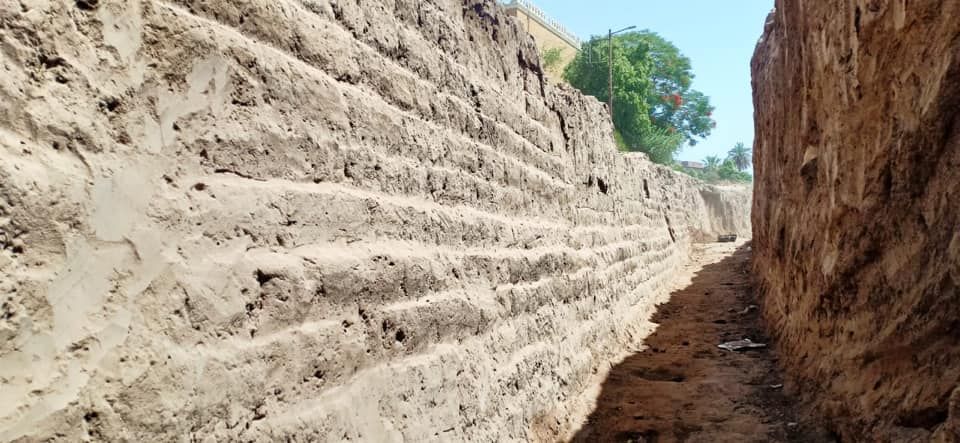Roman-Era Structures Found Near Sphinx-Lined Egyptian Avenue
Excavations at Kebbash Road revealed circular ovens, a mud-brick wall and a sandstone wall
:focal(419x275:420x276)/https://tf-cmsv2-smithsonianmag-media.s3.amazonaws.com/filer/c3/39/c339f0ad-7443-4595-bedc-f150044b929d/2020_jun29_egyptovens.jpg)
Last week, Egypt’s Ministry of Tourism and Antiquities announced the discovery of ancient walls and ovens along Kebbash Road, the sphinx-lined avenue that connects Luxor to Karnak’s Great Temple of Amon.
Archaeologists unearthed the structures while conducting excavations associated with an ongoing restoration project, reports Angy Essam for Egypt Today. The find includes several round ovens that may have been used to bake mud bricks or pottery and a mud-brick wall dating to the late Roman Empire, which spanned roughly the third through fifth centuries A.D.
The wall, found west of Kebbash Road, measures almost 100 feet long, 8 feet tall and 10 feet wide. Per Egypt Today, the team also identified a sandstone wall that stretches all the way from Karnak in the north to Luxor in the south—a distance of almost two miles. Organized in three horizontal rows of sandstone blocks, the barrier was built to protect the Nile River’s eastern banks from seasonal flooding.

Thousands of years ago, Kebbash Road played a key role in Opet, an ancient Egyptian festival held during the second month of the lunar calendar. According to Al-Masry Al-Youm of Egypt Independent, pharaohs celebrated Opet by leading holy processions featuring elaborately decorated, statue-filled boats. Members of the public stood on both sides of the road, cheering and dancing as the parade passed.
In 2017—four years after the historic walkway first opened to the public—the Egyptian government announced plans to transform the space into a giant open-air museum. The project, which aims to restore the road to its onetime glory, is part of a larger effort to expand tourism in the Luxor region. But renovations, originally scheduled for completion in 2018, have been repeatedly delayed. Seasonal humidity threatens visible sandstone structures, including the 1,200 or so sphinxes that line Kebbash Road, and new discoveries have put broader plans on hold as thorough excavations commence.
/https://tf-cmsv2-smithsonianmag-media.s3.amazonaws.com/filer/8d/2b/8d2be2f7-2c00-45d7-b10d-0cefae2b8205/105290729_3159091400803155_4333996651101094723_n.jpg)
Earlier this year, authorities moved four ram-headed sphinxes from behind the Karnak temple to Cairo’s Tahrir Square. (The statues are separate from those on Kebbash Road but boast a similar design.) The decision attracted widespread criticism from archaeologists, who pointed out that placing the sphinxes in a city center would expose them to dangerous environmental conditions.
“These statues are made from sandstone and come from Luxor, where the weather is dry,” Monica Hanna, an archaeologist at the Arab Academy for Science, Technology, and Maritime Transport, told the Times’ Magdy Samaan in January. “When they are placed in Cairo, the second most polluted city in the world, that will destroy them.”